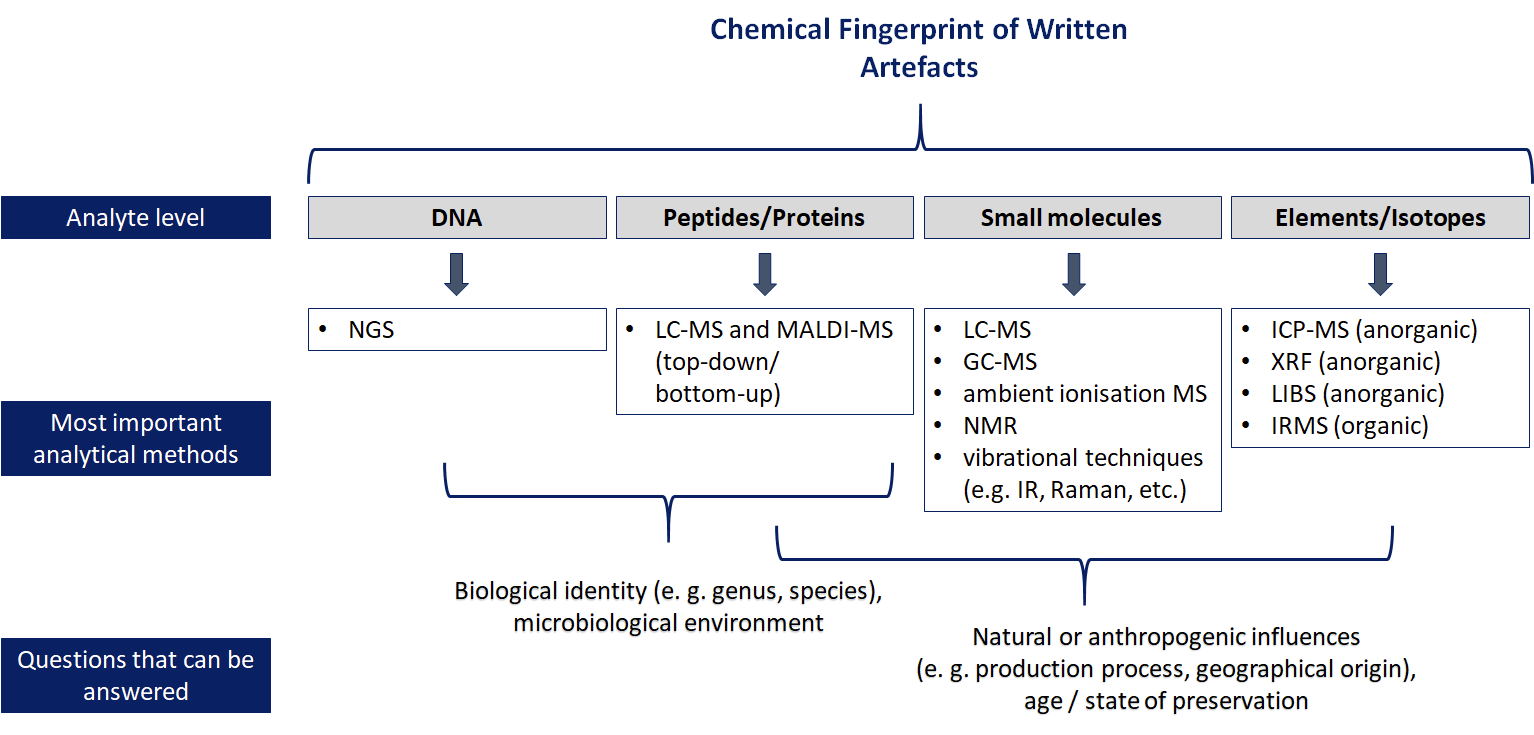Omics-Analysis
Marina Creydt
In general, the suffix "-omics" refers to comparative chemical analyses that make it possible to obtain as much chemical information about an object as possible. Depending on which analyte classes are the focus, their investigation is referred to as genomics (DNA), proteomics (proteins and peptides), metabolomics (metabolites), metallomics (elements) or isotopolomics (isotopic ratios). However, it should be noted that technological limitations mean that not all elements, molecules or sequences can be fully recorded.
In many cases, the analytes are not yet known in detail prior to the actual measurement, and a screening is then carried out first. Such screening methods are also referred to as non-targeted methods. In contrast to non-targeted methods, targeted methods are used to investigate analytes that are already known and for which more specific methods can usually be used.
Depending on the analytes, different research questions can be answered. In addition, in most cases, various analytical methods are available for this purpose (see figure). The selection of the most suitable method and the analytical level depends not only on the research question, but also on the nature of the material. Furthermore, sampling also plays an important role: while some methods are compatible with almost non-invasive sampling, some procedures require an invasive approach.

